Description
⚙️ Project Overview
The Smart Piezoelectric Footstep Power Generation System is a modern renewable energy prototype that transforms the mechanical pressure of walking into usable electrical power.
The system consists of a 5×2 array of piezoelectric sensors (10 sensors total) arranged under a platform or tile surface.
When pressure is applied through foot movement, each piezo sensor produces an alternating current (AC) voltage.
This generated energy passes through a bridge rectifier and filter circuit to convert it into DC voltage, which is then stored in a 6V rechargeable lead-acid battery.
An LCD display monitors the real-time voltage level, while a connected LED circuit visually demonstrates power output.
This compact system is ideal for learning renewable energy concepts, power conversion, and practical energy harvesting applications.
⚡ Working Principle
The system operates based on the piezoelectric effect, where specific materials generate electrical potential when subjected to mechanical stress.
-
Energy Generation:
As someone steps on the tile, pressure is applied to the 5×2 piezo sensor grid, producing alternating voltage pulses. -
Rectification:
The generated AC voltage from the piezo sensors is passed through a bridge rectifier to convert it into DC voltage. -
Filtering and Storage:
The DC output is filtered using capacitors to smooth voltage ripples and stored in a 6V lead-acid battery. -
Display and Output:
The LCD module shows the generated voltage level, while the LED circuit lights up to indicate usable energy output.
This self-sustained system highlights how human kinetic energy can be harvested and reused effectively.
🔩 Key Features
-
Converts mechanical pressure from footsteps into electrical energy.
-
5×2 piezoelectric sensor grid (10 sensors) for higher output voltage.
-
LCD display for real-time voltage and energy monitoring.
-
Bridge rectifier and filter circuit for efficient AC-DC conversion.
-
6V lead-acid battery for energy storage.
-
LED circuit as output load for demonstration.
-
Compact, reliable, and ideal for renewable energy research.
🧰 Technical Specifications
| Parameter | Specification |
|---|---|
| Piezoelectric Grid | 5×2 Array (10 Piezo Sensors) |
| Output Voltage (Raw) | 1.5V–15V AC (variable by pressure) |
| Rectifier Type | Full Bridge Rectifier (1N4007 Diodes) |
| Filter Circuit | Capacitor-based ripple filter |
| Battery | 6V Lead-Acid Rechargeable Battery |
| Display Unit | 16×2 LCD Display |
| Output Load | LED Circuit (visual indication) |
| Optional Controller | Arduino / ATmega328 for voltage monitoring |
| Output Power | 0.5–2W (depending on applied force) |
| Platform Size | 20×15 cm (Expandable) |
| Operation Type | Pressure-based power generation |
| Application Area | Renewable & Sustainable Energy Research |
🎓 Educational Outcomes
Students will learn:
-
Piezoelectric energy harvesting principles.
-
Rectification and voltage regulation.
-
Low-voltage DC storage and utilization.
-
Interfacing of LCD for live voltage monitoring.
-
Renewable energy integration for IoT and smart city systems.
This project provides practical experience in energy harvesting, embedded electronics, and renewable energy systems.
💡 Applications
-
Smart footpaths for energy harvesting in public spaces.
-
Railway stations, airports, and malls for generating micro power.
-
IoT-based energy monitoring prototypes.
-
Educational renewable energy demonstrations.
-
Power supply for low-power street lighting or sensors.
🧩 Advantages
-
Self-powered, no external supply required.
-
Demonstrates real-world sustainable energy harvesting.
-
Compact and easy to demonstrate in classrooms or labs.
-
Helps understand piezoelectric material behavior.
-
Environment-friendly and maintenance-free design.
📦 Package Includes
-
Piezoelectric Sensor Grid (5×2 Configuration)
-
Bridge Rectifier & Filter Circuit
-
LCD Display Module (16×2)
-
LED Indicator Board
-
6V Lead-Acid Battery
-
Power Output Terminals
-
Documentation (Word + PDF)
-
Block Diagram & Circuit Diagram
-
User Manual and Explanation Guide

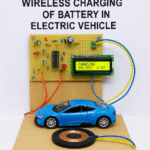

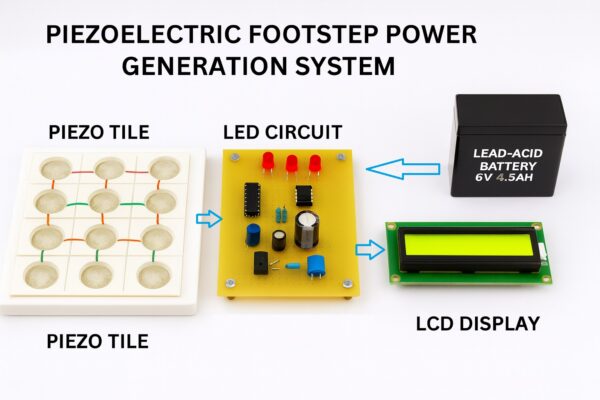

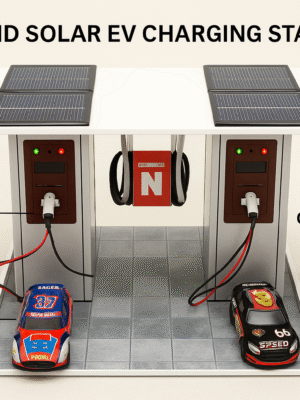
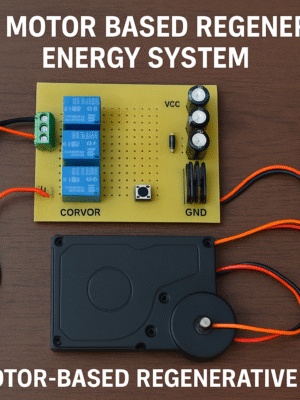
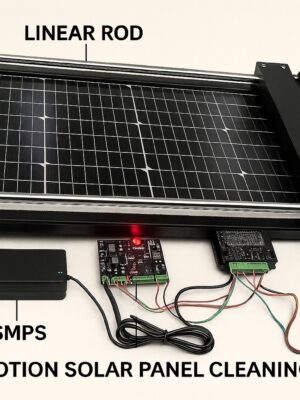







Reviews
There are no reviews yet.